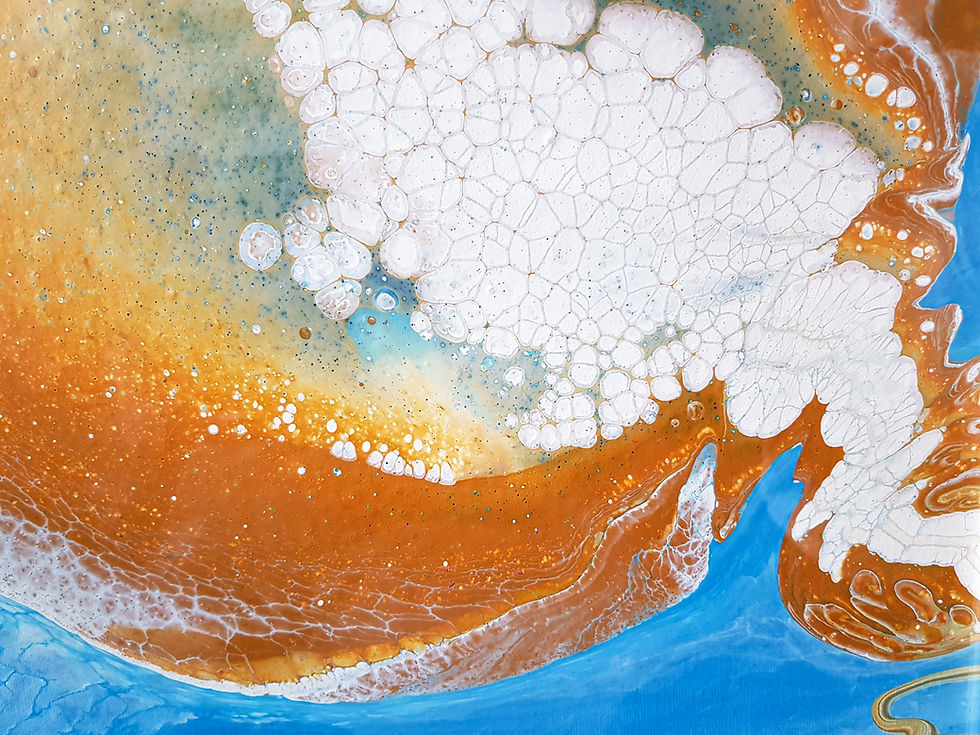ABOUT HYGIENE
- Tien Nguyen

- Apr 2
- 3 min read
Updated: Apr 11

FACTS:
The human skin microbiome is highly diverse:
Bacteria: ~1,000 species (e.g., Staphylococcus, Cutibacterium, Corynebacterium)
Fungi: ~100 species (mainly Malassezia species)
Viruses: Many types, but difficult to count (includes HPV, polyomaviruses)
Mites: At least 2 known species (Demodex folliculorum and Demodex brevis).
Total Skin Microbiota:
Each square centimetre of a human skin has between one million to one billion bacteria, depends of the area. Theentire body can have up hundred trillion of microorganisms.
Fact about shower:
Showering removes most surface microbes but doesn’t sterilise the skin.
Before shower the entire body has trillions of microorganisms.
Immediately after shower this number can be reduced by 50–90%.
Within 1–2 hours after shower bacteria begin to regrow, repopulating the skin, and just 24 hours after shower, the microbiota mostly restored to pre-shower levels.
The current consensus among dermatologists is that the skin microbiota plays a critical role in inflammatory skin conditions like atopic dermatitis (eczema), psoriasis, acne, and rosacea. There is strong evidence that an imbalance in the skin microbiome (dysbiosis) contributes to inflammation, barrier dysfunction, and immune dysregulation.
APPLICATION:
Proper hygiene promotes symbiosis (balance in the skin microbiome) which will promote healthy and beautiful skin. It is recommended that we should:
Wash hair daily with shampoo and hair conditioner.
The scalp is rich in sebaceous (oil) glands, providing an ideal habitat for microorganisms that thrive on sebum. This makes it one of the most microbiologically active areas of the skin. Considering the scalp has a total of microorganisms in the order of tens of billions (ten times more than the face), it does not make sense if we wash face daily but every few days for hair. The common belief that washing hair daily is harmful and causing hair loss is both scientifically and clinically unfounded (more info can be found in Manage Hair Loss and Dandruff).
Wash body (i.e., having a shower) daily. Avoid the use of sponges, loofahs, brushes even washcloths to scrub or to exfoliate our skin, because this practice can cause more harm than good. It can compromise our skin barriers, either due to physical trauma or the introducing of germs to the skin, or both. They are the places for microorganisms to colonise. The proper way to wash our skin is using a soap free, gentle cleansing agent such as BHC Body Wash. Lather the cleanser all over the skin with hand, then rinse it off thoroughly with water.
Use new fresh clean towel daily to dry skin. Wet towels grow germs. It is best to use towels (face, hand, bath etc.) only once, then wash them [in the washing machine] before reuse. Using warm air jet to dry skin is a modern and innovative alternative.
Using a hair dryer. Wet hair and wet skin can create an ideal environment for germs to grow. Letting hair dry by air can take hours which can promote the growth of microorganisms.
Avoid the use of any kind of oil (petroleum jelly, wax, and the like) on hair or skin. While this practice can create an instant improvement of hair and skin, it is just the appearance. Oil on hair or skin can act as breeding ground for microorganisms, the process that leads to dermatitis, dandruff, hair loss etc.
Change clothes daily – from underwear to home clothing or work uniforms. Never wear shoes without socks or wear socks without shoes. Treat footwear like underwear.
Change bed sheets, pillowcases etc. twice weekly.
Using a washing machine to wash clothes and towels is superior to hand wash. Using a dryer to dry clothes is ideal and more hygienic than putting them on cloth lines. Warm and moist clothes can promote germs growth.
Copyright – bhcmedicalcentrre.com.au




Comments